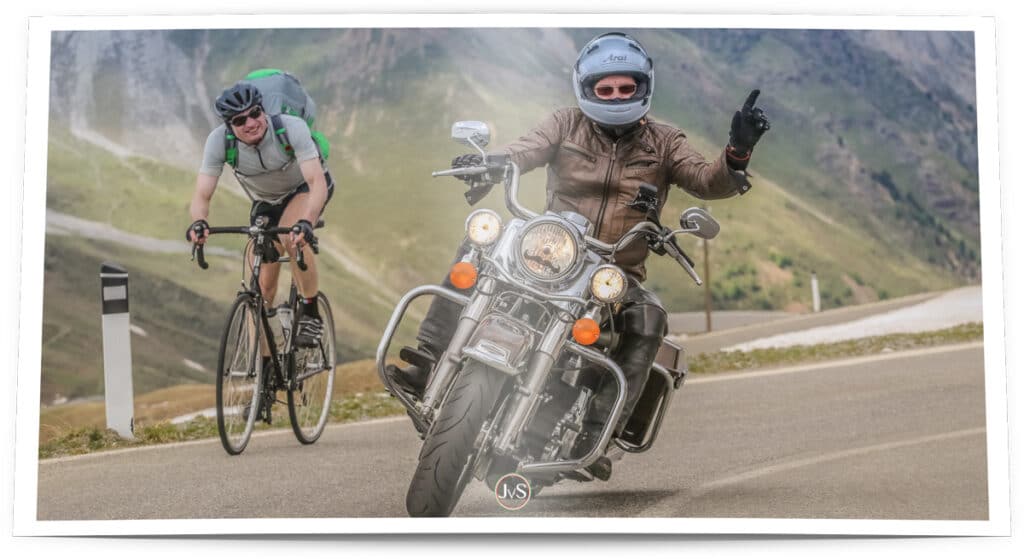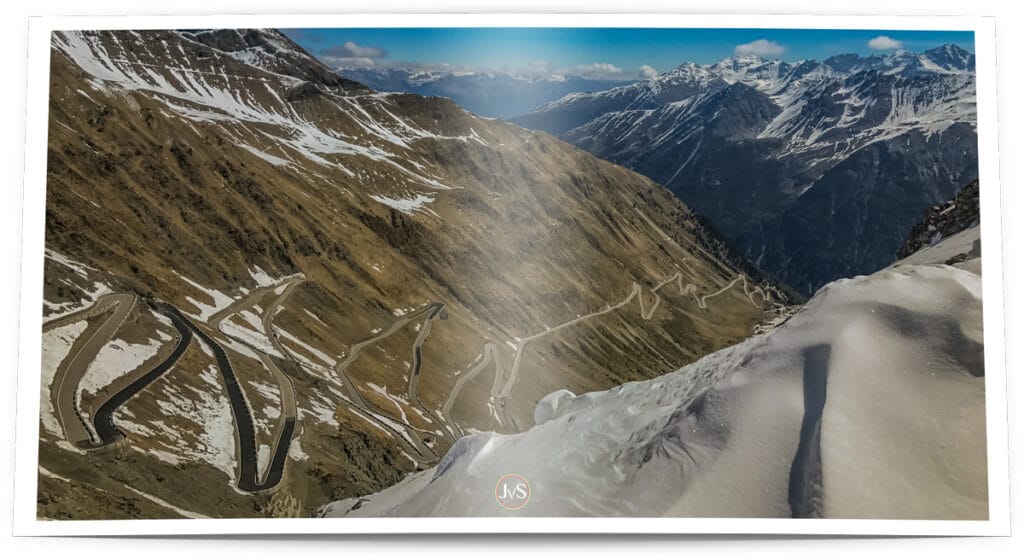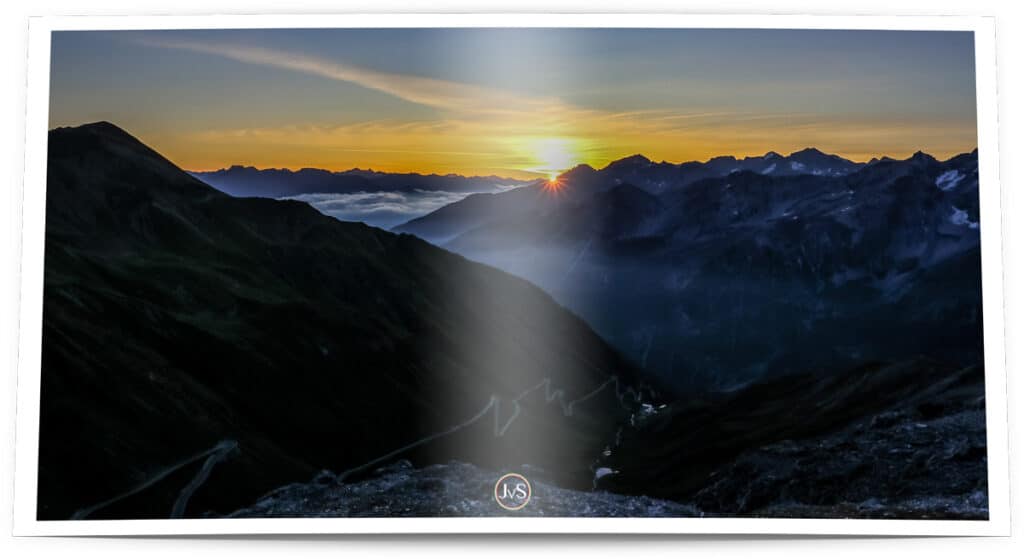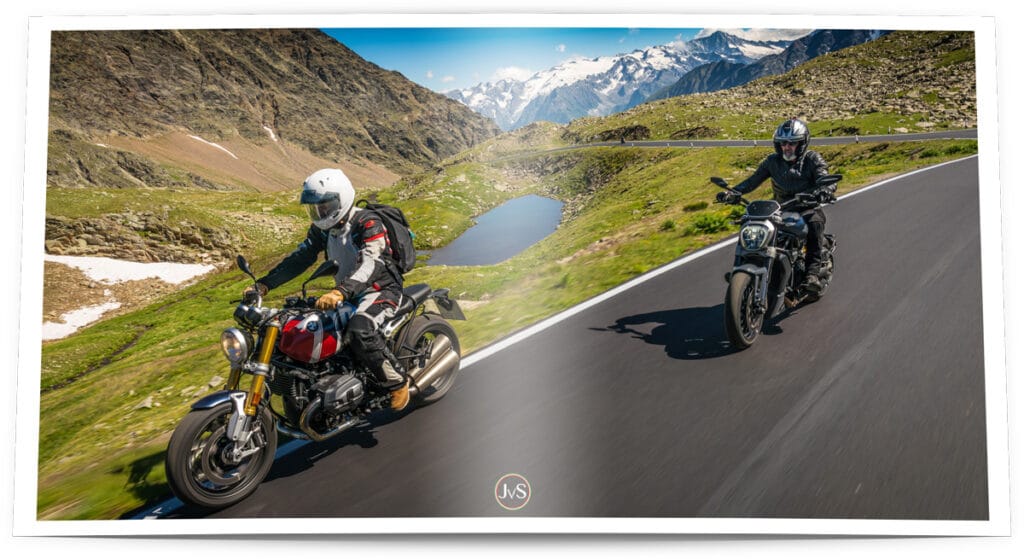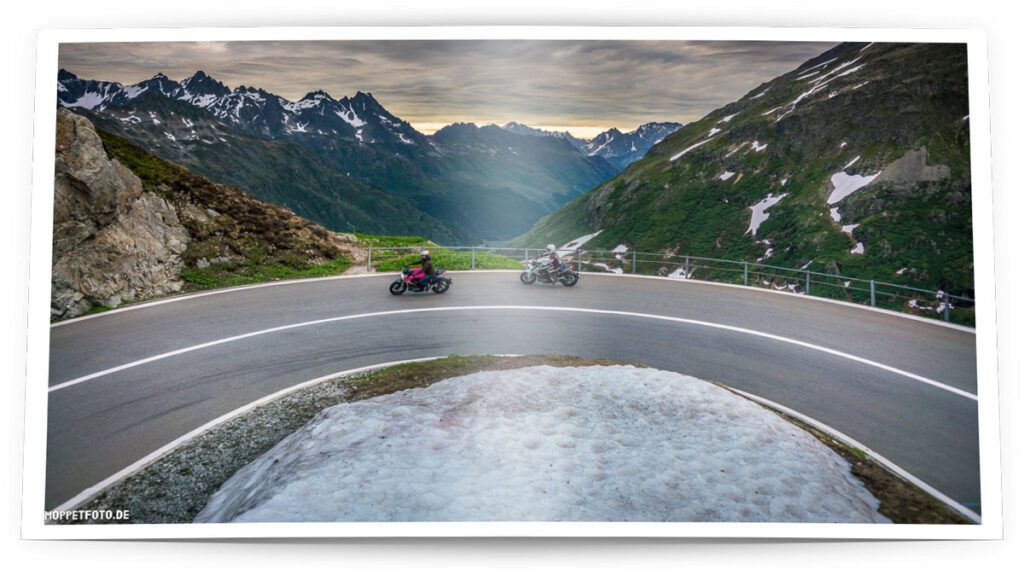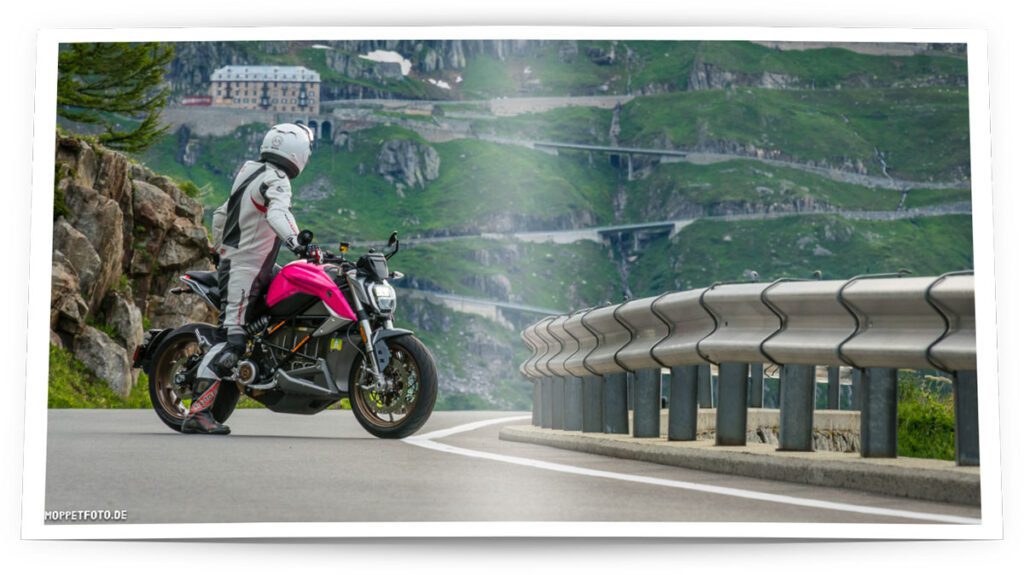
The Grimsel Pass. I can’t recall a landscape that mesmerised me as much as the northern ramp of this dream road. Photos by Uli (moppetfoto.de), text by me, special guest: Isa Urbancek from Country Road Alpnach.

This story about the Grimsel appeared in the “Passportrait” series in MOTORRAD, Europe’s largest motorbike magazine, issue 5.2023 (February). The Passportrait is a collaboration between Uli from www.moppetfoto.de and myself.
Before you read, please note: this post was translated with the help of Deepl.
If you find any errors – please have fun first and then give me a hint.
“Haslital” is written on the sign at the side of the road, not far from the marmot park at the top of the pass – makes me smile. But this north-facing valley is not as cute as it sounds. If you come from Gletsch and ride along the Totesee lake to cross the Grimsel Pass, you are greeted by a surreal landscape.
A granite and gneiss desert formed by the mighty forces of ice-age glaciers spreads out. It plays with colours and structures in such a way that it is difficult to keep your eyes on the road. Polished stone, glowing yellow, green and sometimes pink, reminiscent of protruding intestines, alternates with sharp-edged ashlars and merges into sloping slabs of all thicknesses that seem to slide into the abyss. Only occasionally does sparse vegetation prevail over the stony ground. Meltwater runs over polished humps, barely recognisable because there is no spray, and later roars as it forces its way through crevices in the rock.
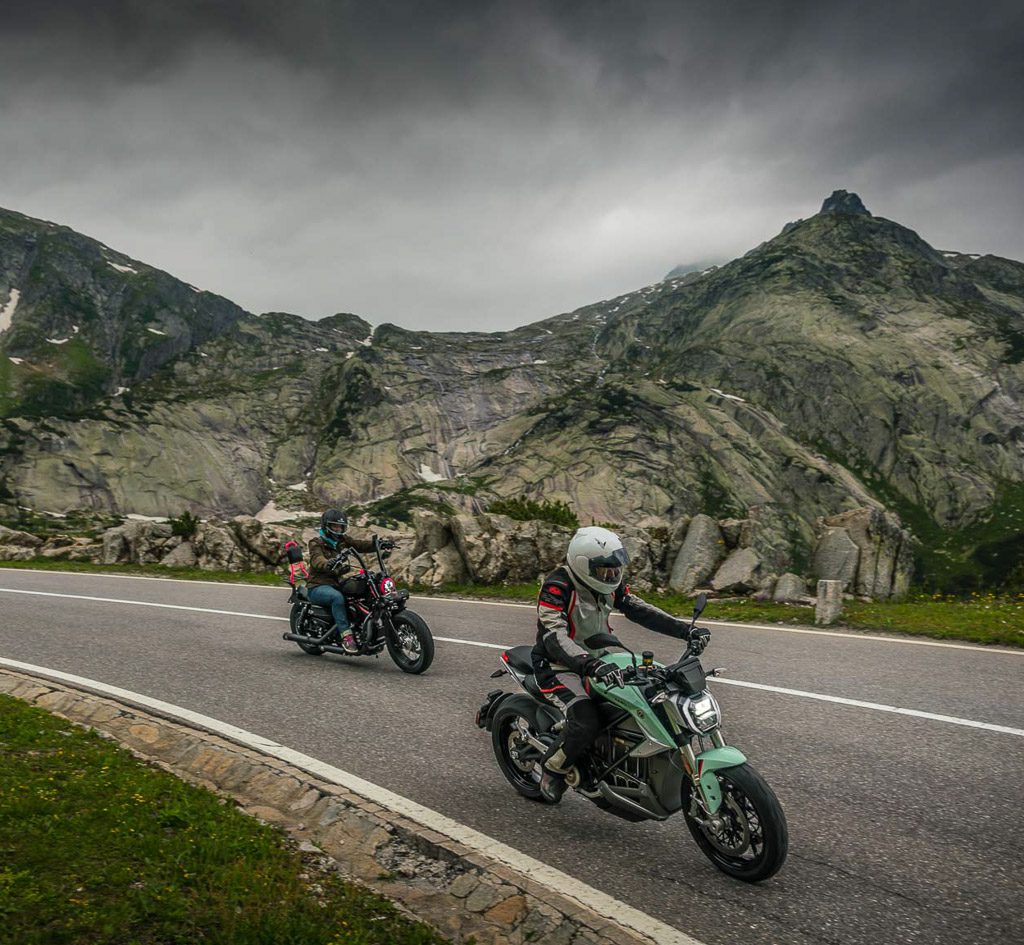
Fascinating stone worlds on the Grimsel
An arctic
landscape
In case anyone is wondering why the Totesee – the lake of the dead – at the top of the pass is called that: around 800 years ago numerous soldiers are said to have been driven into these waters by the people of Valais. Creepy.
The huge lake Grimsel, a good 150 metres below the pass, hides its dimensions deep in the mountains and is held in check by two dam walls. The first is accessible via rough cobbles – something every motorcyclist should do – and leads to a cathedral made of stone, resting on a peninsula in the lake: the Grimsel Hospice. Swiss pride chiselled in stone, built for eternity.

Swiss pride, carved in stone. The Grimsel Hospice
The second, much higher dam is no longer up to the task – a crack forces it to be replaced, so a third dam is built directly in front of it. A feast for fans of large construction sites and high alpine logistics. Here, man is triumphing over nature with technology and juxtaposing the rustic rocky landscape with gigantic power station structures. Closing off entire valleys with concrete and making torrents disappear into quiet lakes. Covering everything with a network of high-voltage power lines and stretching thick steel cables for the steepest cable cars in the world.
And yet: despite all the magic technology – when ibex are suddenly a spectator on the sloping ride through the hairpin bends, nature always unmistakably plays first fiddle. Even without an ibex sighting, a glance over the dam walls down into the valley is enough to hear it.
It is shaped like a trough, with steeply sloping, weathered walls, the valley floor strewn with stone debris of all shapes. Not far from the shoulder are huge boulders, which must have caused small earthquakes when they fell from the mountain, and which have to be avoided for the sake of simplicity. These are ideal conditions for road builders.
So a dream road – not just for motorcyclists – rides through the middle of it, with a first-class design and varying gradients. Several tunnels, hairpin bends and wide loops in dense forest, later over lush alpine meadows, lie along the way. On both sides of the road, immense cones of debris grow upwards, and in winter, countless avalanches throw themselves across the valley, leaving behind
Painful aisles
in the woods
And hidden somewhere, the young Aare is always rushing, cutting deep and spectacularly into the rock in narrow sections.
You pass through typical central Swiss villages of dark wooden houses with brightly flowering geraniums on the balconies and the inevitable barbecue in the front garden. Moving slower than permitted here, in keeping with the proverbial Swiss cosiness, is not torture but, on the contrary, a first-class pleasure.
Innertkirchen, the end point of the Grimsel Pass road and also the starting point for the Susten Pass, is nevertheless reached more quickly than desired. Here, not far from the spectacular Aare Gorge, numerous restaurants offer the opportunity to properly categorise what you have just experienced. The north side of the Grimsel that you have just travelled on is in stark contrast to the Meienwang, the much shorter and steeper ramp that leads from Gletsch to the top of the pass.

View back to the Meienwang (Grimsel Pass south ramp)
This steep slope, which is overgrown with flowers compared to the stony wasteland in the Haslital and rises spectacularly from the Valais, is conquered by six hairpin bends resting on imposing retaining walls. And although the first view from the depths is terrifying, it is only six kilometres from the mighty Grand Hotel Glacier du Rhône to the summit.
Here, on this wide, actually very sporty section, it can be early summer as soon as the road opens, while ice floes float in Lake Tote and the surrounding mountain giants retain their meltwater for a few more days.
But the Meienwang only becomes captivating when you come to a standstill in one of the wide hairpin bends – with the view of the Furka Pass boulevard opposite and the narrow tracks of the Furka steam railway disappearing into the Muttbach valley, which – nostalgia permitting – occasionally provides a special olfactory experience with dense clouds of coal and steam.
Nostalgic memories of the good times of Swiss mountain pass tourism come to mind at the sight of the Belvédère Hotel perched majestically in a serpentine – all the more so because the Rhône glacier that once reached deep into the valley has given way to a sad, grey scar in the rock just a stone’s throw from the hotel.
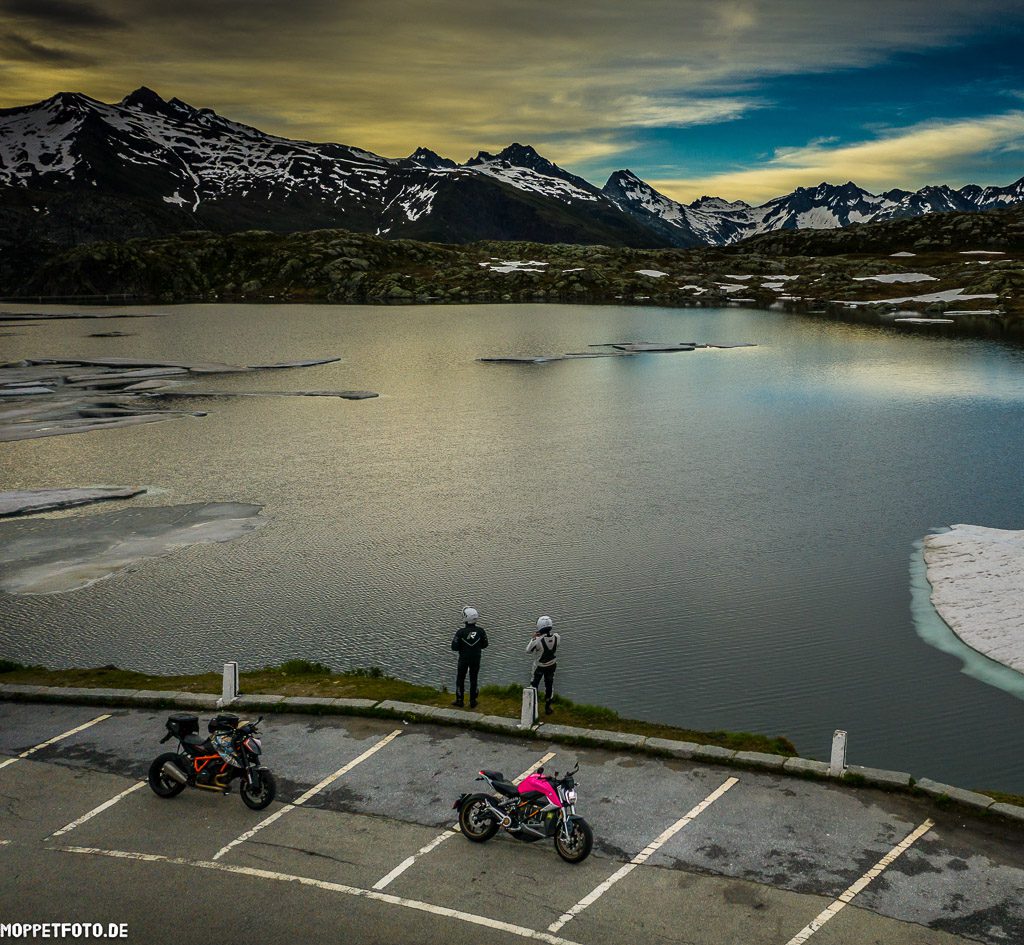
View over the Totesee lake on the Grimsel Pass
But the panoramic views of the Gotthard massif, the all-dominant mountain world and down into the Valais, which open up with every hairpin bend and every metre of altitude gained, are probably just as impressive today as they were back then.
Thank-yous, High-Fives & Links
- Country Road Alpnach – Zero Zentralschweiz
Many thanks, Isa, for the technical support, your modelling and looking after the bikes! - Hotel Restaurant Urweider, Innertkirchen
Thank you for your warm hospitality and the sensational cuisine!
Perfectly matching:
Let’s climb the Stelvio together!
Stelvio – Count from 1 to 10!
Have fun looking at them!
Magical Moments
Dream Roads: The Gavia Pass (2621 m)
Dream Roads: The Susten Pass (2224 m)
Unimaginable?

